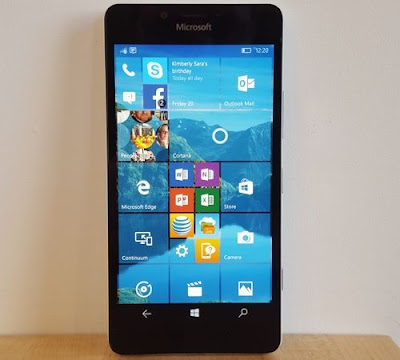Microsoft needs to change its mobile strategy or get out
Microsoft has had a rocky few years as it tries to compete with the likes of Apple and Samsung in the smartphone world. This week, it looks like the wheels are finally falling off.
The company announced Wednesday it’s cutting 1,850 jobs, with 1,350 coming from its Finnish operations, known as Microsoft Mobile Oy, and an additional 500 from other regions. The move also includes a $950 million restructuring charge for the company, with $200 million going to employee severance packages.
The news comes just a week after Microsoft confirmed it was selling its feature phone business to FIH Mobile and HMD Global for $350 million.
Microsoft’s smartphone struggles speak to a larger issue facing potential competitors to Apple’s iOS and Google’s Android: With so many consumers already embedded in one operating system or the other, creating a viable third alternative is a virtually Sisyphean task.
In fact, according to comScore, Microsoft’s share of the US smartphone market is a paltry 2.7%. That’s virtually nonexistent next to Android’s 52.8% and Apple’s 43.6%.
Microsoft has been trying to make a foothold in the phone market for years. Unfortunately, its Windows Phone operating system never managed to catch on among consumers.
The company’s Windows 10 Mobile operating system was supposed to change that by increasing Microsoft’s app offerings and creating a kind of universal OS for developers to build software for. But even that hasn’t helped the company draw enough consumers away from competitors Apple and Google’s Android.
In a statement Wednesday, Microsoft CEO Satya Nadella said his company is now, “Focusing our phone efforts where we have differentiation — with enterprises that value security, manageability and our Continuum capability, and consumers who value the same.
“We will continue to innovate across devices and on our cloud services across mobile platforms,” he added.
Microsoft’s Continuum mode was designed to allow business and general consumers to plug their Windows 10 Mobile phones into special docks that would then essentially turn their handsets into Windows 10 PCs. I’ve used the feature, and it certainly feels like the future of computing. But it doesn’t quite offer a full desktop user experience — and there still aren’t very many apps that work with it.
A Microsoft spokesperson said the company will, "continue to develop new devices and adapt Windows 10 for small screens, support Lumia Phones," though added, "We have nothing to share about our future product roadmap.”
If Microsoft is going to turn around its mobile business, it needs to offer something more compelling than it already does. That or abandon the proposition entirely.
Source: Yahoo
The company announced Wednesday it’s cutting 1,850 jobs, with 1,350 coming from its Finnish operations, known as Microsoft Mobile Oy, and an additional 500 from other regions. The move also includes a $950 million restructuring charge for the company, with $200 million going to employee severance packages.
The news comes just a week after Microsoft confirmed it was selling its feature phone business to FIH Mobile and HMD Global for $350 million.
Microsoft’s smartphone struggles speak to a larger issue facing potential competitors to Apple’s iOS and Google’s Android: With so many consumers already embedded in one operating system or the other, creating a viable third alternative is a virtually Sisyphean task.
In fact, according to comScore, Microsoft’s share of the US smartphone market is a paltry 2.7%. That’s virtually nonexistent next to Android’s 52.8% and Apple’s 43.6%.
Microsoft has been trying to make a foothold in the phone market for years. Unfortunately, its Windows Phone operating system never managed to catch on among consumers.
The company’s Windows 10 Mobile operating system was supposed to change that by increasing Microsoft’s app offerings and creating a kind of universal OS for developers to build software for. But even that hasn’t helped the company draw enough consumers away from competitors Apple and Google’s Android.
In a statement Wednesday, Microsoft CEO Satya Nadella said his company is now, “Focusing our phone efforts where we have differentiation — with enterprises that value security, manageability and our Continuum capability, and consumers who value the same.
“We will continue to innovate across devices and on our cloud services across mobile platforms,” he added.
Microsoft’s Continuum mode was designed to allow business and general consumers to plug their Windows 10 Mobile phones into special docks that would then essentially turn their handsets into Windows 10 PCs. I’ve used the feature, and it certainly feels like the future of computing. But it doesn’t quite offer a full desktop user experience — and there still aren’t very many apps that work with it.
A Microsoft spokesperson said the company will, "continue to develop new devices and adapt Windows 10 for small screens, support Lumia Phones," though added, "We have nothing to share about our future product roadmap.”
If Microsoft is going to turn around its mobile business, it needs to offer something more compelling than it already does. That or abandon the proposition entirely.
Source: Yahoo




Comments
Post a Comment